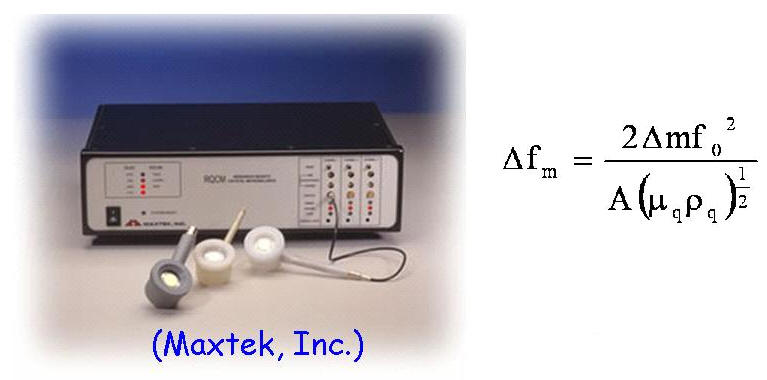Quartz Crystal Microbalance
The quartz crystal microbalance (QCM) technique is based on the piezoelectric properties of quartz. Quartz crystals that are cut appropriately exhibit a converse piezoelectric effect, i.e., an applied electric field induces a directional mechanical deformation. Typically, thin layers of gold or silver are sputtered or evaporated onto both sides of a quartz crystal to form electrodes, and an alternating electric field is applied.

The alternating field induces a mechanical shear oscillation in the crystal in a direction perpendicular to the applied electric field and with a fundamental frequency that depends on the crystal thickness and angle of cut. When a material is deposited onto one of the electrodes the oscillation frequency of the crystal decreases. The frequency of the crystal can be followed as a function of time thus permitting monitoring of adsorption, absorption and desorption processes. The figure shows a Maxtek, Inc. research QCM. We use polished quartz crystals with a fundamental frequency of 5 MHz.
Experimental Application
Polymers and Condensed Matter Physics Group
-
Address
P.O. Box 43121, Lubbock, TX 79409−3121 -
Phone
806.742.3553 -
Email
che@ttu.edu
